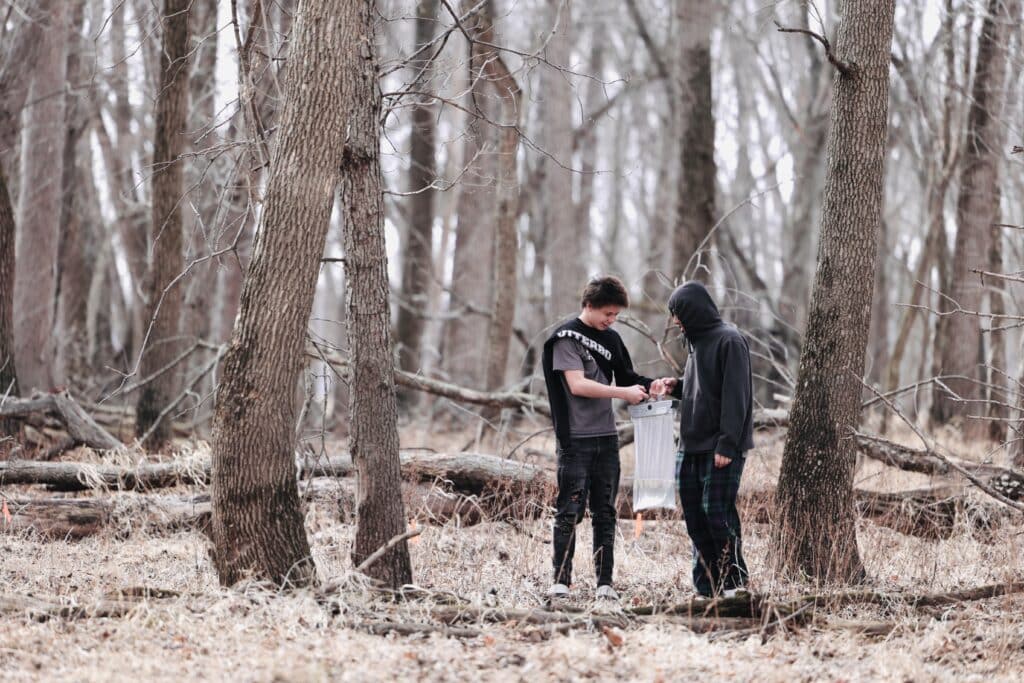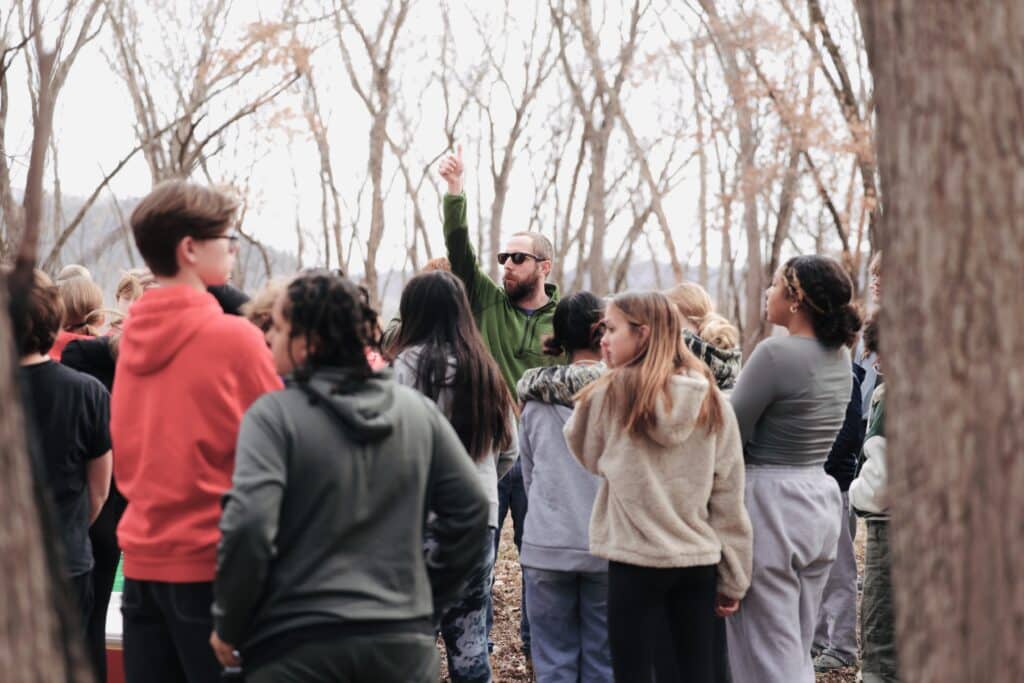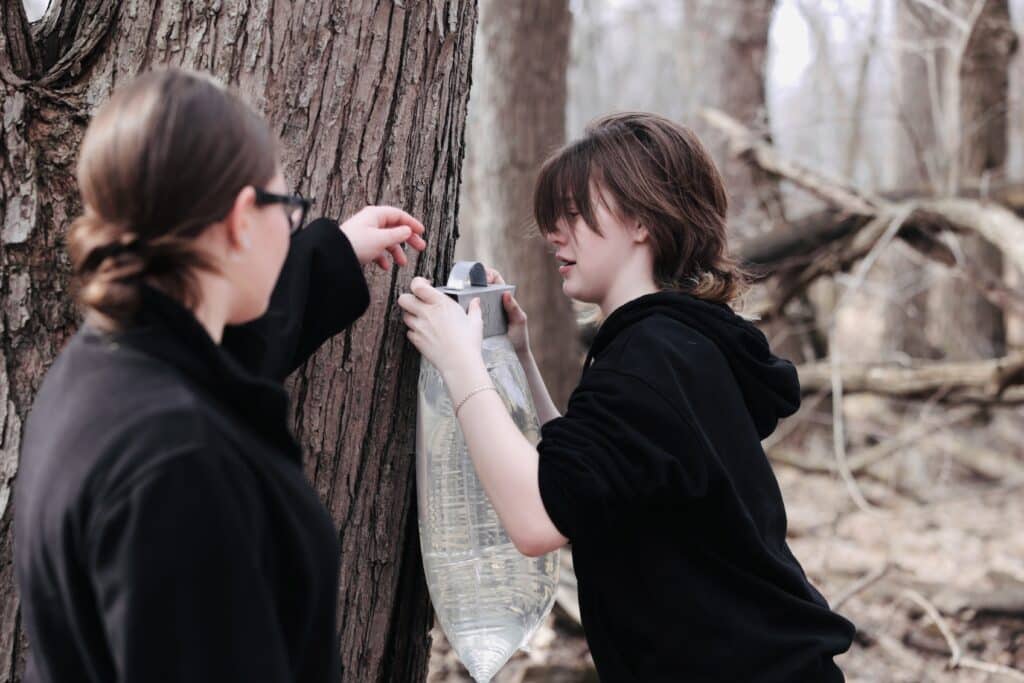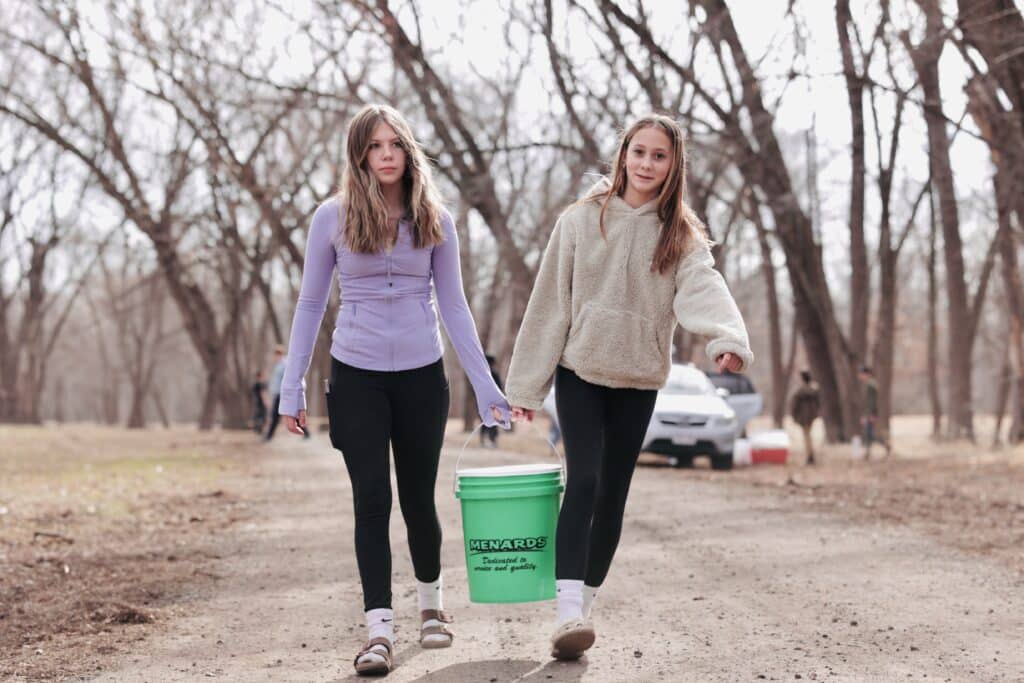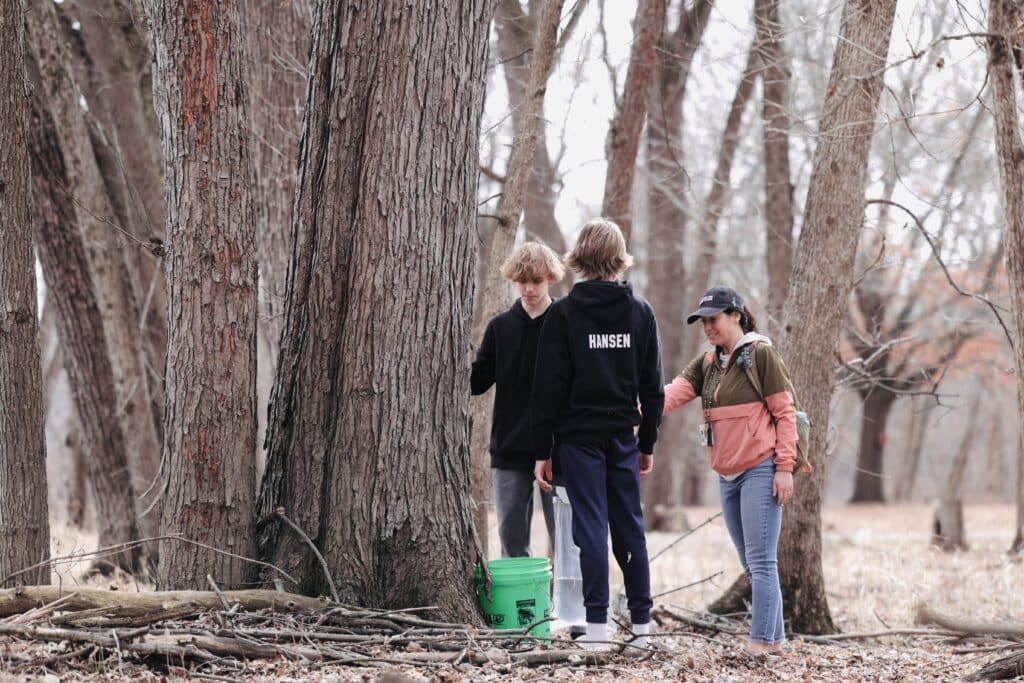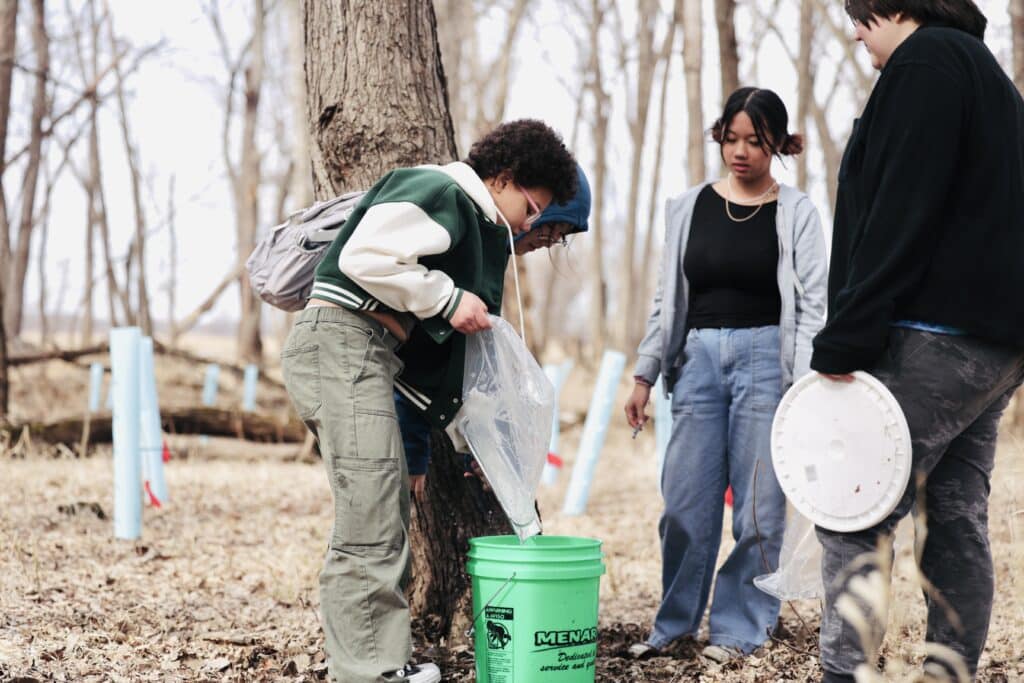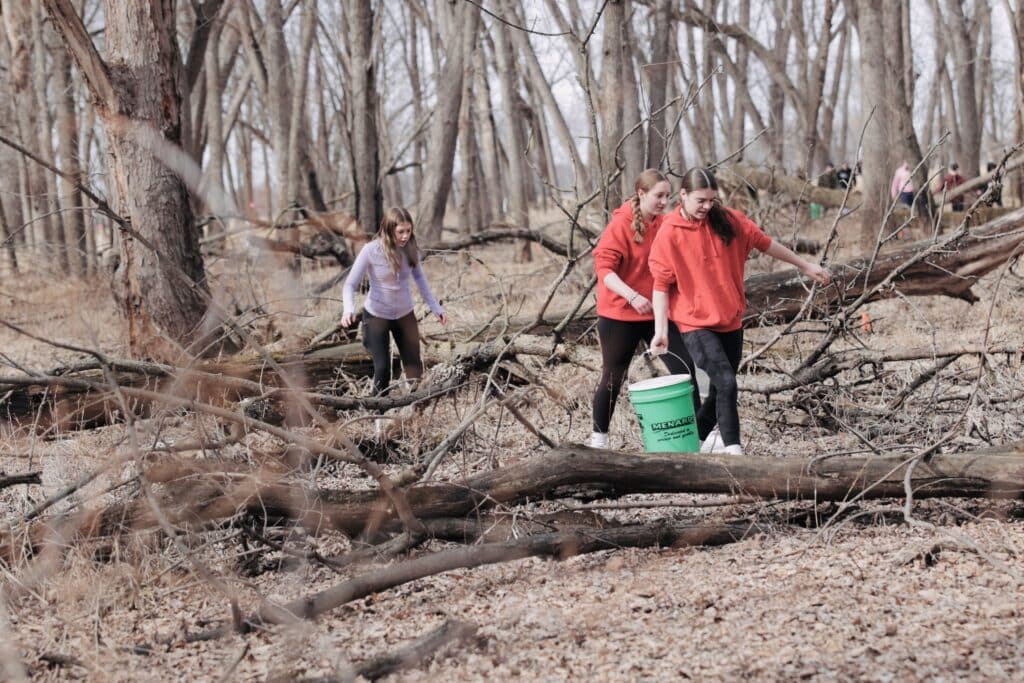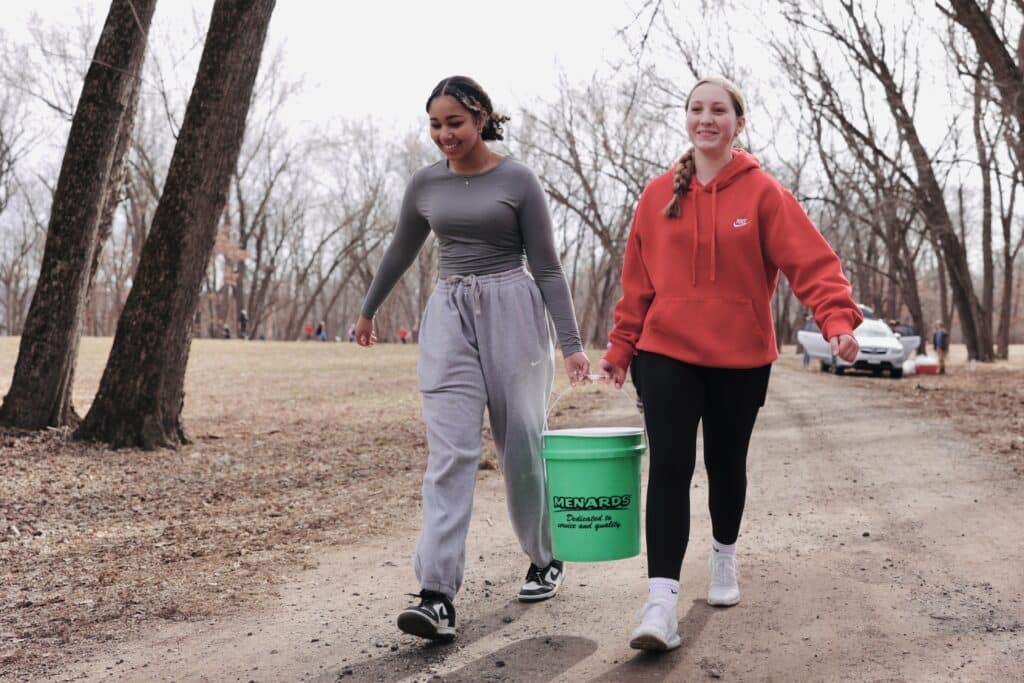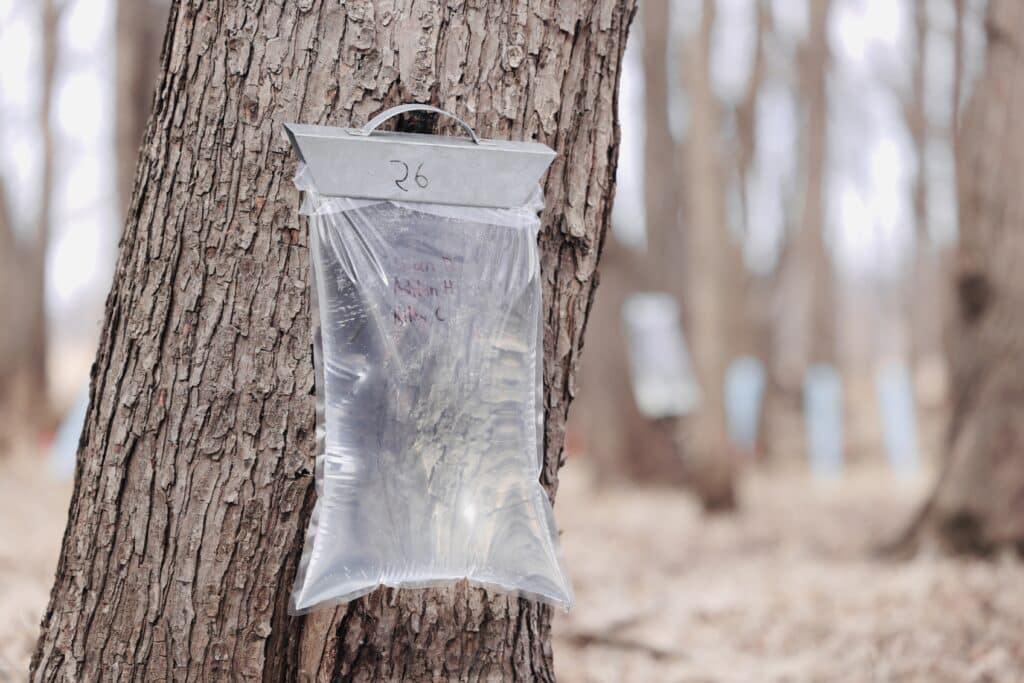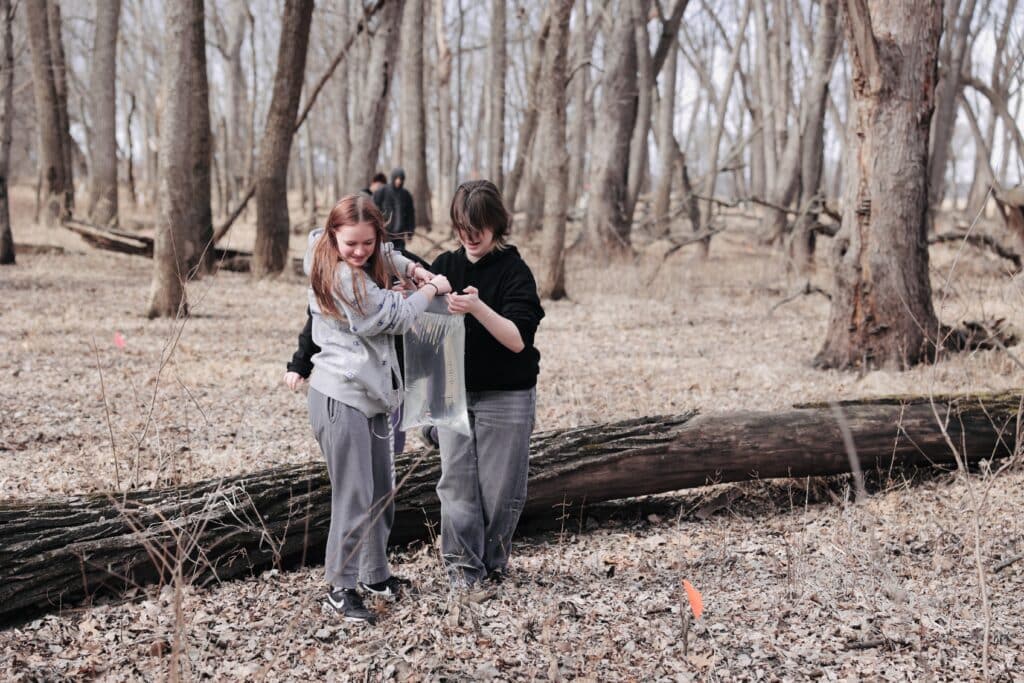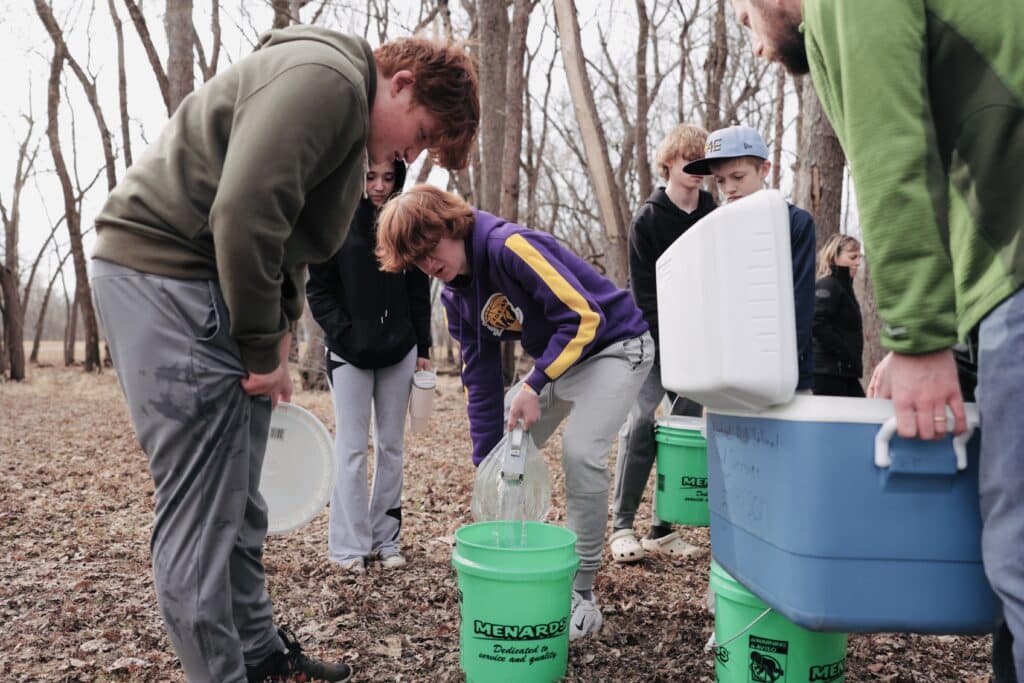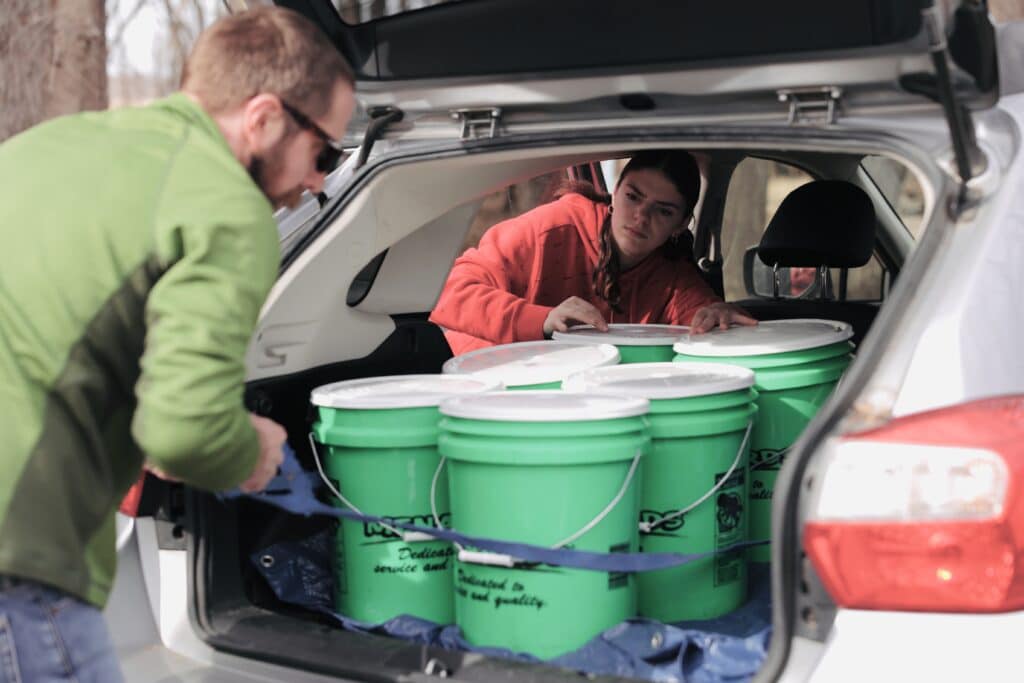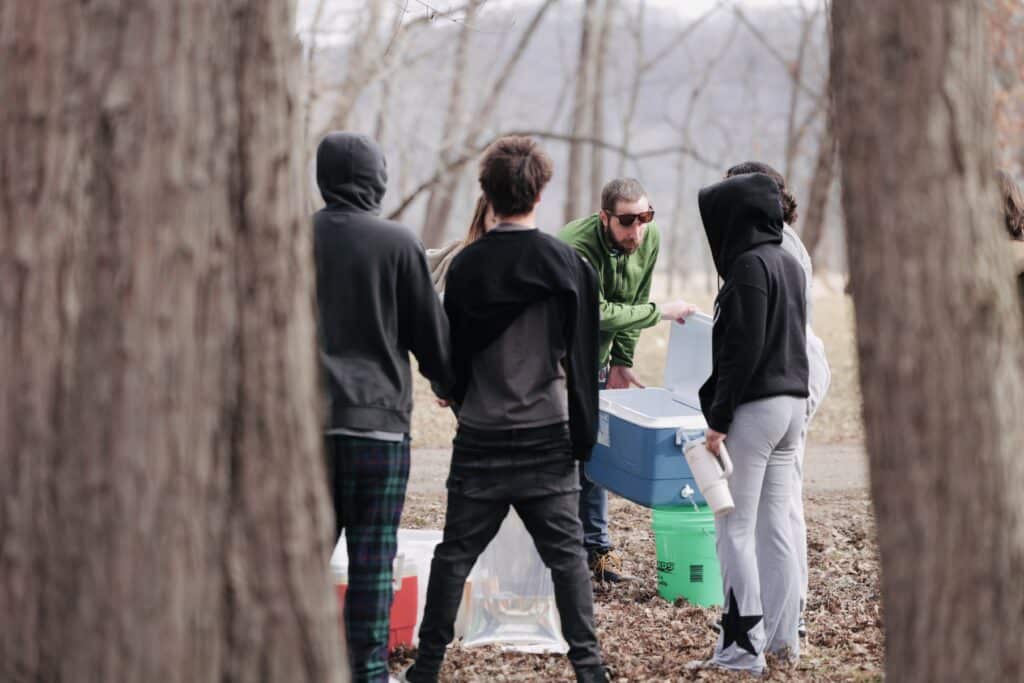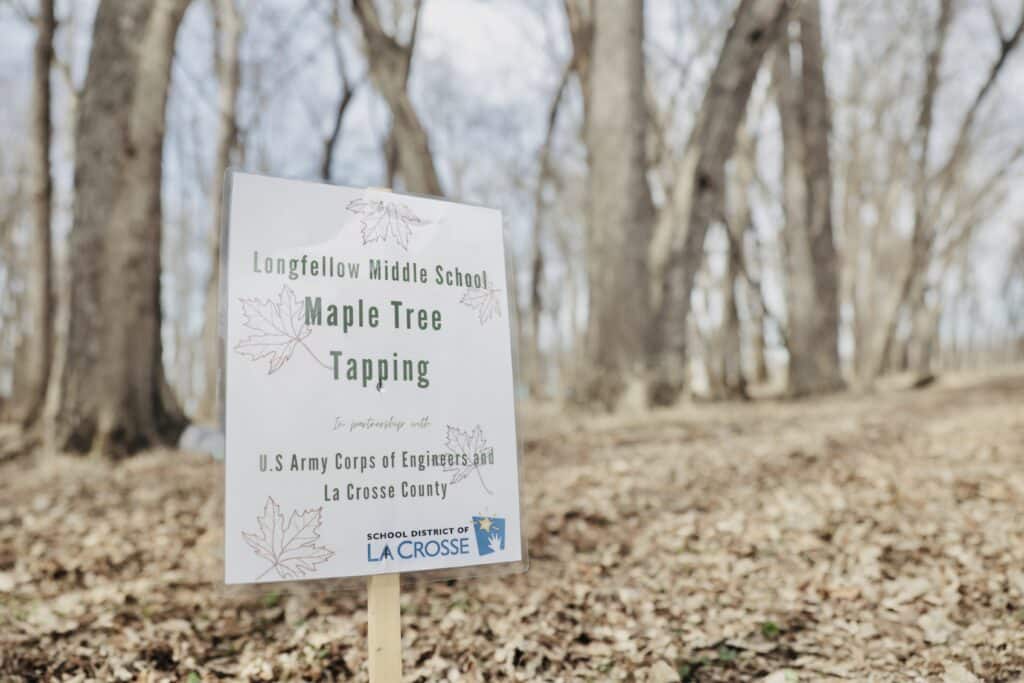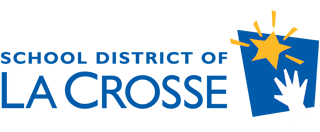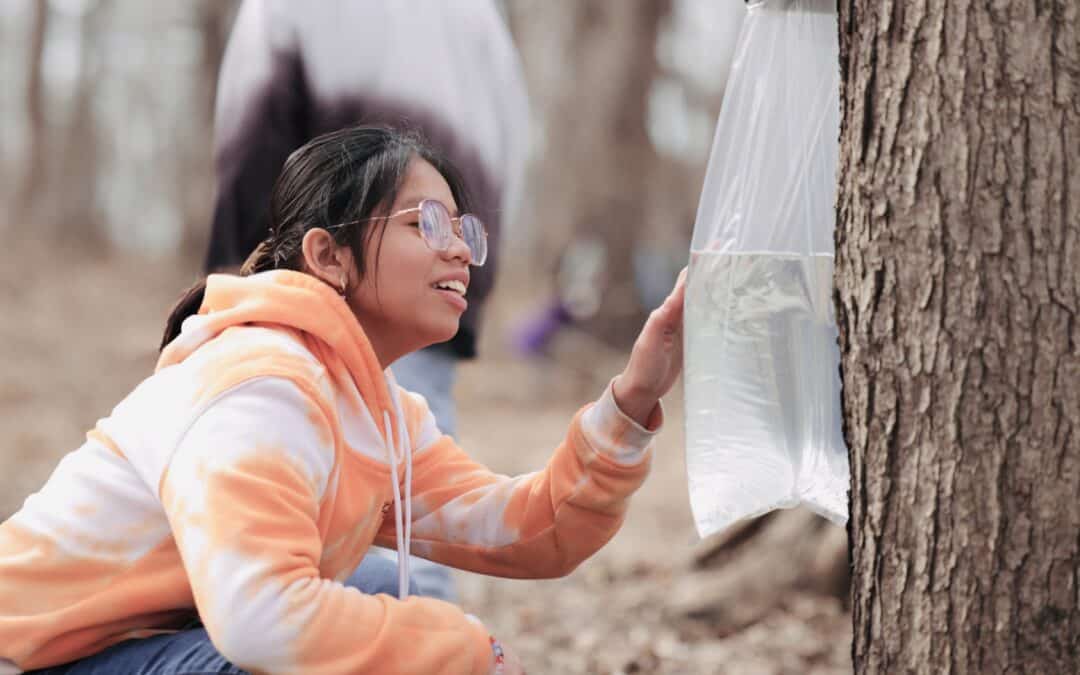LA CROSSE, Wis., (March 4, 2024) – La Crosse Longfellow Middle School 8th graders just wrapped up an inspiring sap harvesting project. Led by teachers Nathan Niehausen, Stephanie Hein, Pam Popp, and Jeff Hansen the project connected students to nature, blending biology discussions with the hands-on experience of tapping maple trees. The immersive outing involved all 100 of the school’s eighth graders. In collaboration with La Crosse County and the US Army Corps of Engineers, this initiative aimed to provide students with real-world experiences in biology, environmental science, and responsible harvesting practices.
“We wanted to connect students to nature and introduce them to responsible harvesting practices, emphasizing our partnership with the natural world,” said Teacher Nathan Niehausen.
The project started with students diving into the pages of author Robin Wall Kimmerer’s book ‘Braiding Sweetgrass,’ which inspired conversations about the reciprocal relationship between humans and the environment. Outdoors, students identified maples, studied branching patterns, and explored the intricate systems of tree biology. Despite the project taking place about a month earlier than in previous years, the students were keen participants, each finding a tree suitable for sap extraction.
The collaboration with La Crosse County and the US Army Corps of Engineers granted students access to Goose Island County Park’s maple branches, further enriching their outdoor educational experience. The project aligns with the district’s commitment to experiential learning, fostering a sense of responsibility towards the environment.
“I hope our students take away that trees, plants, they are not just stagnant things,” said Niehausen. “They are responding, communicating, and having responses to stimuli. If they’re offering us things, we can benefit, but we also have to offer some things back.”
The sap harvesting project demonstrates the School District’s dedication to providing a unique educational experience beyond traditional classroom boundaries. It encourages students to not only absorb scientific knowledge but also to witness the interconnectedness of environmental systems.
The 40:1 ratio means the class is expecting around two and a half gallons of syrup. As a result, the eighth graders are gearing up for a unique celebration—a pancake and syrup taste test, offering a delicious way to savor the success of these young environmental stewards.
